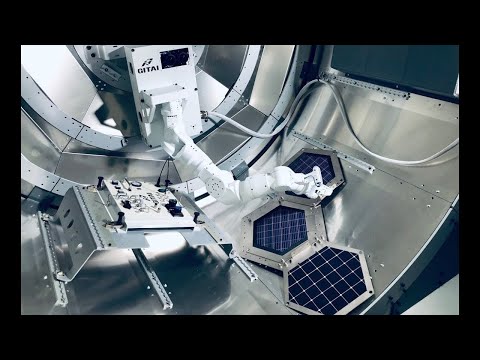
Breaking News
 Charlie's Killer Was MKUltra'd?
Charlie's Killer Was MKUltra'd?
 Doctors are finally admitting that biopsies Spread Cancer…
Doctors are finally admitting that biopsies Spread Cancer…
 We MUST keep talking about this, demand Voter ID. Joe Rogan and Elon Musk on Fraud
We MUST keep talking about this, demand Voter ID. Joe Rogan and Elon Musk on Fraud
 Nick Shirley exposes there are 1,200 medical transport companies in Minnesota.
Nick Shirley exposes there are 1,200 medical transport companies in Minnesota.
Top Tech News
 The First Production All-Solid-State Battery Is Here, And It Promises 5-Minute Charging
The First Production All-Solid-State Battery Is Here, And It Promises 5-Minute Charging
 See inside the tech-topia cities billionaires are betting big on developing...
See inside the tech-topia cities billionaires are betting big on developing...
 Storage doesn't get much cheaper than this
Storage doesn't get much cheaper than this
 Laser weapons go mobile on US Army small vehicles
Laser weapons go mobile on US Army small vehicles
 EngineAI T800: Born to Disrupt! #EngineAI #robotics #newtechnology #newproduct
EngineAI T800: Born to Disrupt! #EngineAI #robotics #newtechnology #newproduct
 This Silicon Anode Breakthrough Could Mark A Turning Point For EV Batteries [Update]
This Silicon Anode Breakthrough Could Mark A Turning Point For EV Batteries [Update]
 Travel gadget promises to dry and iron your clothes – totally hands-free
Travel gadget promises to dry and iron your clothes – totally hands-free
 Perfect Aircrete, Kitchen Ingredients.
Perfect Aircrete, Kitchen Ingredients.
 Futuristic pixel-raising display lets you feel what's onscreen
Futuristic pixel-raising display lets you feel what's onscreen
 Cutting-Edge Facility Generates Pure Water and Hydrogen Fuel from Seawater for Mere Pennies
Cutting-Edge Facility Generates Pure Water and Hydrogen Fuel from Seawater for Mere Pennies
JAXA teams with GITAI for world-first private sector space robotics demo

The new agreement under the JAXA Space Innovation through Partnership and Co-creation (J-SPARC) initiative aims to demonstrate the potential for robots to automate of the processing of specific tasks aboard the International Space Station (ISS).
Robotics is altering many aspects of our lives in many fields and one where it is particularly attractive is in the exploration and exploitation of space. Ironically, the great strides made in manned spaceflight since the first Vostok mission lifted off in 1961 have shown that not only is supporting astronauts in orbit challenging and expensive, there are also many tasks, like microgravity experiments, where the human touch isn't the best choice.
These tasks often require complex, precise, and subtle movements that demand either a highly specialized and expensive bespoke apparatus or a robot. The GITAI/JAXA agreement will work on ways that robots can handle maintenance, scientific experiments, and other specific tasks aboard the ISS.
Currently, GITAI is conducting autonomous control and automation in a ground mock-up of the Japanese Experiment Module "Kibo." In the fiscal year 2021, a robotic arm will be used in the BISHOP Airlock Module on the ISS to demonstrate its ability to carry out various tasks, including operating switches, plugging in and unplugging cables, and assembling panels.



